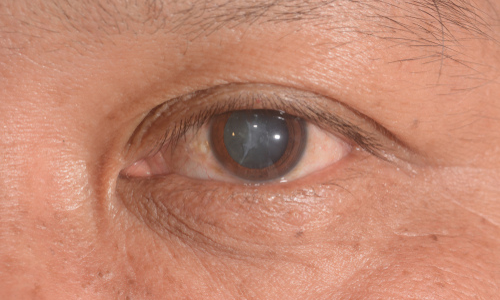
Facts and Myths about Cataracts for Cataract Awareness Month
When enough people repeat misinformation about cataracts, myths tend to be regarded as the truth. June is Cataract Awareness Month and it's the perfect time to examine the myths and facts regarding cataracts and cataract surgery.
Myth: Vitamins and herbal medications clear cataracts.
Fact: Surgery is the only way to improve your vision if you have cataracts.
Cataracts occur when the lens inside your eye becomes cloudy. The normally clear lens sits behind your iris and pupil and focuses light rays on to your retina, the layer of photosensitive cells that lines the back of the eye.
The eye condition may cause blurry or double vision, light sensitivity, increased glare, faded colors, and trouble seeing at night. During cataract surgery, your opthalmologist replaces your cloudy lens with an artificial lens called an intraocular lens implant (IOL). Once the IOL is in place, you'll be able to see clearly once again. Cataract surgery is very effective and has a 95 percent success rate, according to Prevent Blindness.
Myth: Only adults get cataracts.
Fact: Although cataracts primarily affect adults, babies and children can have cataracts too.
Pediatric cataracts can be present at birth or develop later. These cataracts are also treated with surgical replacement of the lens. Prompt removal of cataracts is crucial, as a cloudy lens can affect the development of normal vision in children.
Myth: Recovering from cataract surgery takes a long time.
Fact: Most people recover from the surgery in four to six weeks.
Although full recovery takes a few weeks, you'll probably notice improvements in your vision within a few days of your surgery.
Myth: There's nothing you can do to prevent cataracts.
Fact: It may not be possible to prevent all cataracts, but you can do a few things to reduce your risk.
These steps may help you avoid cataracts or slow the progression of your condition if you already have cataracts:
- Use Sun Protection. Sunglasses that block both UVA and UVB light protect your eyes and reduce your risk of cataracts and cancer in and around your eyes.
- Don't Smoke. People who smoked more than 15 cigarettes a day had a 42 percent higher risk of having cataract surgery than non-smokers in a study published in JAMA Ophthalmology. Quitting smoking not only helps you avoid cataracts but also offers multiple health benefits.
- Keep Chronic Diseases Under Control. Diabetes and high blood pressure may increase the likelihood that you'll develop cataracts. Taking your medication as prescribed and monitoring blood sugar and blood pressure levels will help you protect your vision.
- Eat a Healthy Diet. Although vitamins won't reverse cataracts, eating fruits and vegetables that contain lutein, zeaxanthin, or vitamins A and E may lower your cataract risk.
- Wear Goggles or Safety Glasses. Eye injuries increase your risk of cataracts. Using eye protection at work or when you complete home improvement projects offer an easy way to protect your vision.
Myth: Cataract removal only improves your eyesight.
Fact: Clearer vision enhances your quality of life and helps you avoid injuries.
Driving, reading, or enjoying a hike in the woods becomes difficult when you have cataracts. Surgery restores your ability to see road signs clearly, read prescription labels, or tackle the latest blockbuster novel.
When you can't see well, you're more likely to trip and fall over a tree root during a hike or even injure yourself at home. A 15-year mortality study conducted by Australian researchers determined that older people who had cataract surgery had higher long-term survival rates than those who decided against surgery.
Do your cataracts complicate your life? Cataract Awareness Month is a great time to decide what surgical treatment options are best for you.
Sources:
Prevent Blindness: Know the Risk Factors for Cataracts
American Academy of Ophthalmology: Pediatric Cataracts
JAMA Network: JAMA Ophthalmology: Smoking Cessation and the Risk of Cataracts, 3/14
American Academy of Ophthalmology: What Are Cataracts?, 10/1/19
National Eye Institute: Cataracts
All About Vision: Cataracts: 3 Common Types, Causes, Symptoms and Treatment, 6/19
